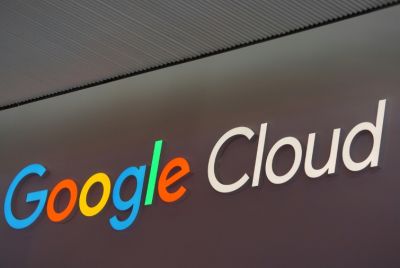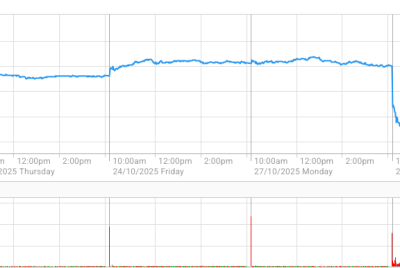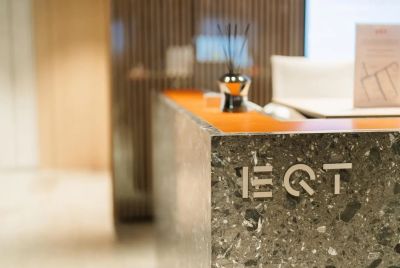Australian Parenting App, Tinybeans, Snaps Up US Rival for $4M, Instantly Doubling Subscriber Base

WHAT YOU NEED TO KNOW:
The Deal: Australian photo-sharing app Tinybeans (ASX: TNY) is acquiring US-based Qeepsake for US$2.7 million ($4.1 million AUD) in an all-stock deal, instantly growing its subscriber base from 51,000 to 90,000 — an 80% jump.
Why It's Smart: The acquisition costs just $67 per retained subscriber, far below Tinybeans' organic marketing costs. Combined revenue hits $8.9 million — an 85% increase over Tinybeans' standalone 2025 result.
The Leadership: Tinybeans is chaired by James Warburton, former CEO of Seven West Media. Qeepsake founders Jeff and Stephanie McNeil started the company in 2015 to preserve memories of their children's lives.
What Changes: Qeepsake's journaling features will be integrated into Tinybeans' platform through 2026, targeting retention of 40,000 high-value users. The deal accelerates Tinybeans' path to profitability without spending cash.
When Your Competitor Becomes Your Biggest Asset
In the world of parenting apps, two names have dominated the family memory space: Australia's Tinybeans and America's Qeepsake. Parents used them to preserve precious moments, create digital scrapbooks, and share milestones with family.
Now they're becoming one company — and it's a masterclass in smart acquisition strategy.
Tinybeans just announced it's buying Qeepsake for US$2.7 million (about $4.1 million AUD) in an all-stock transaction that nearly doubles its subscriber base overnight. But the real genius isn't in the size — it's in the price.
The Math That Makes This Brilliant
Here's why this deal is getting attention from business analysts:
Subscriber Acquisition Cost: The effective cost per retained subscriber is roughly $67. That's significantly below what Tinybeans typically spends on marketing to acquire similar subscribers organically.
Think about it: Instead of spending millions on Facebook ads, Google campaigns, and influencer partnerships to slowly build a user base one person at a time, Tinybeans just bought 49,000 paying customers in one transaction.
Revenue Multiple: The deal is priced at just 0.66 times Qeepsake's FY25 revenue. That's incredibly cheap by tech acquisition standards, where companies often pay 2-5x revenue multiples.
No Cash Required: This is an all-scrip (stock) transaction. Tinybeans isn't writing a check — it's issuing shares. That preserves precious cash for operations while still completing a transformational deal.
"The transaction delivers substantial growth without the need for cash outlay and reflects the disciplined execution of our strategy to build a larger, more efficient subscription business," said James Warburton, Tinybeans' chairman.
Meet the Power Players
James Warburton chairs Tinybeans after a high-profile career including CEO of Seven West Media. He was appointed chair in December 2024 and immediately brought a more aggressive growth strategy.
"This is a transformational step for Tinybeans," Warburton said. "The acquisition of Qeepsake nearly doubles our scale, strengthens our US presence and accelerates our path to profitability — all in a highly capital-efficient way."
Jeff and Stephanie McNeil founded Qeepsake in 2015 as a husband-and-wife team looking for better ways to preserve moments in their children's lives. What started as a personal need became a business serving tens of thousands of families.
Qeepsake raised $4.8 million in funding over six rounds from investors including LaunchCapital, Techstars, and Comeback Capital before this acquisition.
Zsofi Paterson, CEO of Tinybeans, sees the strategic fit clearly: "Qeepsake is a natural strategic fit for Tinybeans."
What Each App Does Differently
Understanding why these two companies work well together requires knowing what makes them different:
Tinybeans: Founded in Sydney in 2012 by Sarah-Jane Kurtini, Eddie Geller, and Stephen O'Young, it's primarily a photo-sharing platform. Parents upload pictures and videos, create albums, and share them privately with family members. Think of it as a private Instagram for your kids.
The app is loved by over 1 million families worldwide and has more than 150,000 five-star reviews across app stores. Last year alone, users shared over 78 million memories on the platform.
Qeepsake: Takes a different approach with text-based journaling. The app sends prompts to parents asking questions about their children, capturing stories, quotes, and moments in words rather than just pictures. Users can then turn these journals into printed books.
It's less about the visual diary and more about preserving the stories, funny quotes, and little details parents might otherwise forget.
The Power of Complementary Products
The brilliance of this acquisition is that these aren't duplicate products competing for the same market — they're complementary features that make each other better.
Parents who love sharing photos on Tinybeans will now have integrated journaling features to add context and stories to those images. Qeepsake users who love text-based memory keeping will gain a robust photo platform to enrich their journals.
"Qeepsake's journaling features complement Tinybeans' photo-sharing platform, broadening product appeal and enabling new monetisation opportunities across a larger and highly engaged subscriber base," the company said in its announcement.
The Numbers Behind the Deal
Let's break down the complete financial picture:
Purchase Price: US$2.7 million in Tinybeans shares, structured in two stages:
- Upfront: $1.2 million in shares
- Performance-based: $1.5 million in performance rights convertible to shares, subject to hitting EBITDA, revenue, and subscriber milestones
Lock-up Period:The consideration shares have a 24-month voluntary escrow, with performance shares released after 12 months
Ownership: After completion, Qeepsake will hold a maximum 12.02% interest in Tinybeans
Subscriber Growth: From 51,000 to expected 90,000 post-integration (targeting 40,000 Qeepsake retention)
Revenue Impact: Combined pro-forma FY25 revenue of $8.9 million, up 85% from Tinybeans' standalone result
Completion Date: Expected late November 2025, subject to final approvals and shareholder resolutions
The Leadership Integration
Smart tech acquisitions retain key talent. This deal does exactly that:
Cliff Sirlin joins the Tinybeans Board as a Non-Executive Director, bringing fresh perspective from the Qeepsake experience.
Tracy Cho, who served as CEO of Qeepsake, becomes General Manager - Qeepsake within the Tinybeans executive team. This ensures continuity for Qeepsake users and preserves institutional knowledge about what made the product work.
Keeping leadership from acquired companies is critical. They understand their user base, know which features matter most, and can guide integration to minimize subscriber churn.
The Path to Profitability
Tinybeans has been burning cash as it builds its subscriber base — a common pattern for growth-stage subscription businesses. But the company is moving in the right direction.
FY25 adjusted EBITDA loss was US$1.44 million, a 60% improvement over the previous year thanks to cost reductions. While still losing money, the trajectory is positive.
The Qeepsake acquisition accelerates the path to profitability through several mechanisms:
Scale Economics: Doubling subscribers without doubling costs improves unit economics dramatically
Cross-Sell Opportunities: Existing users of each platform can be upsold to premium features from the other
Cost Synergies: Combining operations eliminates duplicate overhead in technology, marketing, and administration
Stronger Market Position: A larger, more comprehensive platform attracts brand partnerships and advertising dollars
The company expects integration synergies and a scalable subscription model will help achieve EBITDA profitability faster than operating as separate companies.
The Risks Nobody's Ignoring
Tinybeans acknowledges significant risks in acquiring and integrating Qeepsake:
Subscriber Attrition: Not all Qeepsake users will stick around during the platform migration. The company conservatively estimates retaining about 40,000 of 49,000 subscribers — an 18% expected loss.
Integration Execution: Combining two platforms with different architectures and feature sets is technically complex. Any missteps could frustrate users and accelerate churn.
Product Development: Merging features without creating a confusing user experience requires careful product design and testing.
Key Staff Retention: Beyond the announced leadership, retaining engineering and product talent through the transition period is critical.
The company's modeling uses conservative retention assumptions to account for these risks, but there's no guarantee the integration will be smooth.
The Bigger Picture: App Consolidation
This acquisition reflects a broader trend in consumer subscription apps: consolidation.
The pandemic created a boom in family tech apps as parents worked from home and looked for ways to stay connected with distant relatives. Dozens of apps launched or grew rapidly.
But as pandemic tailwinds faded and marketing costs rose, many subscription apps struggled to reach profitability. That's creating acquisition opportunities for companies with stronger balance sheets.
Tinybeans buying Qeepsake is likely the first of many consolidation plays in parenting tech. Expect similar deals as smaller apps get absorbed by larger platforms that can leverage their subscriber bases more efficiently.
What Users Can Expect
If you're a current user of either app, here's what's likely coming:
Tinybeans Users: You'll gradually see journaling features integrated into your photo-sharing experience, allowing you to add stories and context to your images.
Qeepsake Users: Your account will migrate to the Tinybeans platform over the next year, gaining access to photo-sharing features while keeping your journal entries.
Both: Expect a period of adjustment as features are merged, but the goal is a more comprehensive family memory platform that does everything both apps did, but better.
The company plans to integrate features and migrate subscribers through FY26, suggesting a measured rollout rather than a sudden switch.
The Australian Tech Success Story
Tinybeans represents an interesting Australian tech success story. Founded in Sydney's Bondi in 2012, it's grown into a global platform with users in almost every country.
The company listed on the ASX and expanded aggressively into the US, which has become its fastest-growing market. That American expansion made acquiring Qeepsake — a Massachusetts-based company — a natural strategic fit.
With James Warburton bringing media industry experience to the board and the company executing smart acquisitions, Tinybeans is positioning itself as a serious player in family technology.
© Copyright 2025 IBTimes AU. All rights reserved.





















